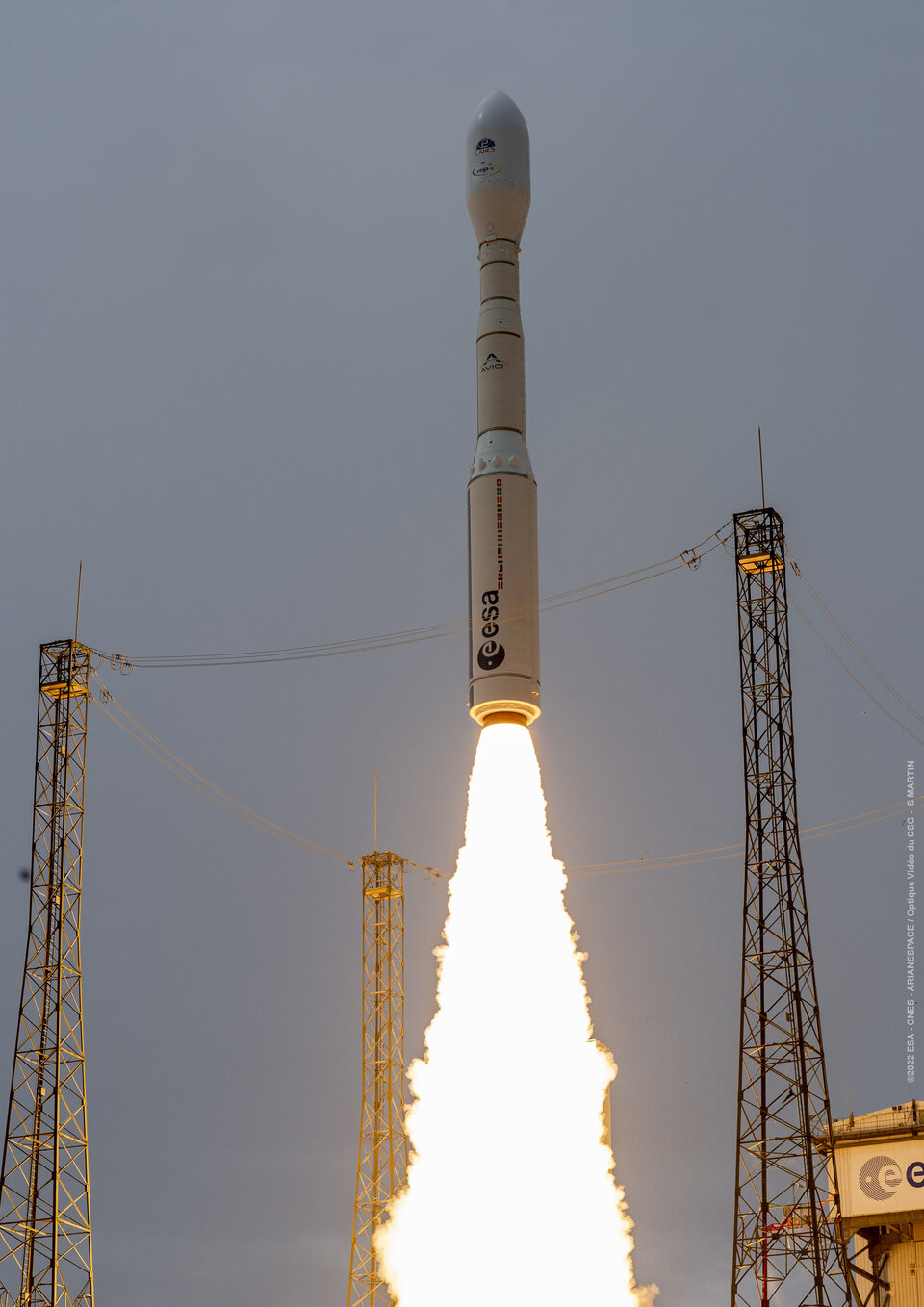1.05.2024

Smiles all round: Vega-C to launch ESA solar wind mission
ESA ensures a ride into space for its Smile mission, with Arianespace signing up to launch the spacecraft on a Vega-C rocket
Smile is a collaboration between ESA and the Chinese Academy of Sciences (CAS). Standing for ‘Solar wind Magnetosphere Ionosphere Link Explorer’, its goal is to help us better understand the interaction between the Sun and Earth. The launch is a major European contribution to the mission.

Vega-C will place Smile in a low-Earth orbit, from which the spacecraft will propel itself to high-Earth orbit. In this final, egg-shaped orbit, Smile will fly around the Earth roughly every two days. It will travel out to around 121 000 km from Earth's surface for a prolonged view of the north polar regions, before approaching within 5000 km to download its treasure trove of stored data to ground stations in Antarctica and China.
Such a unique orbit will allow scientists to observe important regions in near-Earth space for more than 40 hours at a time. Smile will take the first X-ray images and videos showing the solar wind slamming into Earth’s protective magnetic bubble. Its complementary ultraviolet images will provide the longest-ever continuous look at the northern lights.
With today’s signature ceremony, ESA secures the launch of Smile on a Vega-C from Europe’s Spaceport in French Guiana, currently expected for late 2025. Vega-C is Europe’s nimble rocket designed to launch a wide range of missions. It can send up cargo of a mix of shapes and sizes, enhancing Europe’s independent access to space.
“Today marks a major milestone for our innovative Smile mission and signals the determination of all our teams and partners to deliver a successful mission on schedule for maximum scientific benefit,” says ESA Director of Science Prof. Carole Mundell.
Stéphane Israël, CEO of Arianespace, adds, “This signature marks over four years of collaborative efforts between Arianespace and ESA Science teams to develop the Smile mission with a Vega-C launcher.”
David Agnolon, Smile Project Manager, explains why Vega-C is a great choice for Smile, “We are delighted to be launching Smile on such a versatile launch vehicle. Vega-C has been selected as it perfectly matches the needs of the mission, such as required mass capability and injection orbit.”
Smile marks the first time that ESA and China jointly select, design, implement, launch and operate a space science mission. In addition to the launch, ESA is responsible for Smile’s payload module (which hosts its scientific instruments), the spacecraft test facilities, the primary ground station in Antarctica, and a contribution to the science operations.
“Several technical and programmatic difficulties have been jointly overcome by ESA and CAS teams through efficient and respectful collaboration. We all look forward to seeing Smile in orbit in 2025 and collecting scientific data over several years,” says Frédéric Safa, head of ESA’s Future Missions Department.
In autumn 2024, the European and Chinese sections of the spacecraft will arrive at ESA’s technical centre, ESTEC. There, the two sections will be joined together, and the spacecraft will be tested as a complete unit for the first time. The spacecraft will then be shipped from ESTEC to Europe’s Spaceport in French Guiana.
Quelle: ESA
